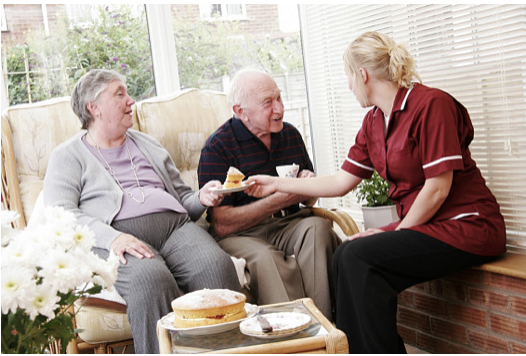If your elderly parent or loved one has sleep apnea, it’s crucial to find a retirement home that understands how to manage this condition. Sleep apnea, especially obstructive sleep apnea (OSA), affects nearly 1 in 3 older adults and, if unmanaged, can increase the risk of falls, heart disease, and cognitive decline. In Ontario, the level of sleep apnea support varies between retirement homes, making it essential to ask the right questions during your tour or consultation.
 Top Questions to Ask Retirement Homes About Sleep Apnea Care
Top Questions to Ask Retirement Homes About Sleep Apnea CareUse the following questions to assess whether a facility is truly equipped to care for someone with sleep apnea:
Do you allow residents to use CPAP or BiPAP machines overnight?
Are your night staff trained in handling sleep apnea-related issues?
Is there a protocol in place if a CPAP machine malfunctions during the night?
Can staff assist with the setup, cleaning, or maintenance of the device?
Do you have an on-call respiratory therapist or nurse available at night?
Are rooms equipped with easy access to electrical outlets for CPAP devices?
Do you monitor or log nightly sleep disruptions for residents with sleep apnea?
How do you handle residents with cognitive decline who resist CPAP therapy?
Is there any extra cost for respiratory-related services?
Do you coordinate with outside sleep clinics or specialists?
Ask questions regarding retirement homes to our experts
Here's a table that compares basic and advanced sleep apnea support features in retirement homes:
| Support Feature | Standard Retirement Home | Sleep Apnea-Friendly Retirement Home |
|---|---|---|
| CPAP Machine Use | Allowed, but self-managed | Fully supported by trained staff |
| Nighttime Monitoring | Basic room checks | Staff trained to detect apnea-related issues |
| Device Cleaning & Setup | Resident or family responsibility | Staff-assisted daily or weekly |
| On-Call Medical Support | Available during emergencies | 24/7 access to respiratory care or nurses |
| Special Accommodations | General room setup | Customized rooms with CPAP-friendly layouts |
Some retirement communities in Ontario specialize in managing chronic conditions like sleep apnea. These homes may offer:
Daily CPAP assistance
Education sessions for staff and families
Access to sleep specialists
Medication management for related conditions
Integration with hospital or clinic care plans
It’s worth noting that some services may come at an additional cost, depending on the level of care required.
Most do, but the level of assistance with using, cleaning, and monitoring the device varies. Always confirm with the specific facility.
In higher-care or assisted living facilities, staff are often trained to help with CPAP use. In standard retirement homes, families may need to handle this themselves.
Retirement homes should coordinate with respiratory therapists or sleep clinics to explore alternative masks or treatment options, such as BiPAP or oral appliances.
Sometimes. Some homes bundle respiratory care into their monthly fee, while others charge separately for equipment handling or specialized medical support.
Long-term care facilities typically offer more medical oversight, including daily respiratory therapy and 24/7 nursing. Retirement homes provide a more independent lifestyle and may offer optional add-ons.
If your loved one has sleep apnea, asking the right questions can help you find a retirement home in Ontario that ensures both safety and quality of life. Don’t assume all homes offer the same level of care—be proactive, take notes, and prioritize CPAP-friendly features during your selection process.
Don't hesitate to contact us at 343 309 5289. We can help you choose the right establishment for you and assist you in your search.

Find a suitable senior residence